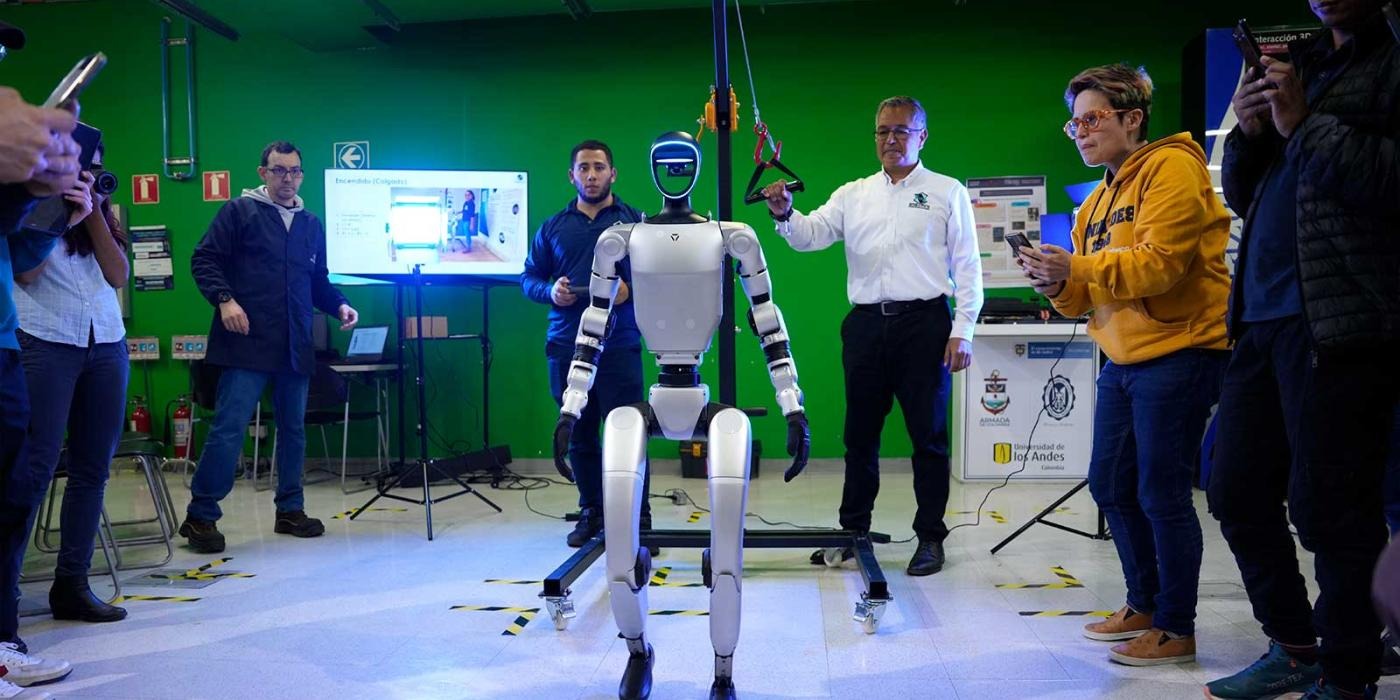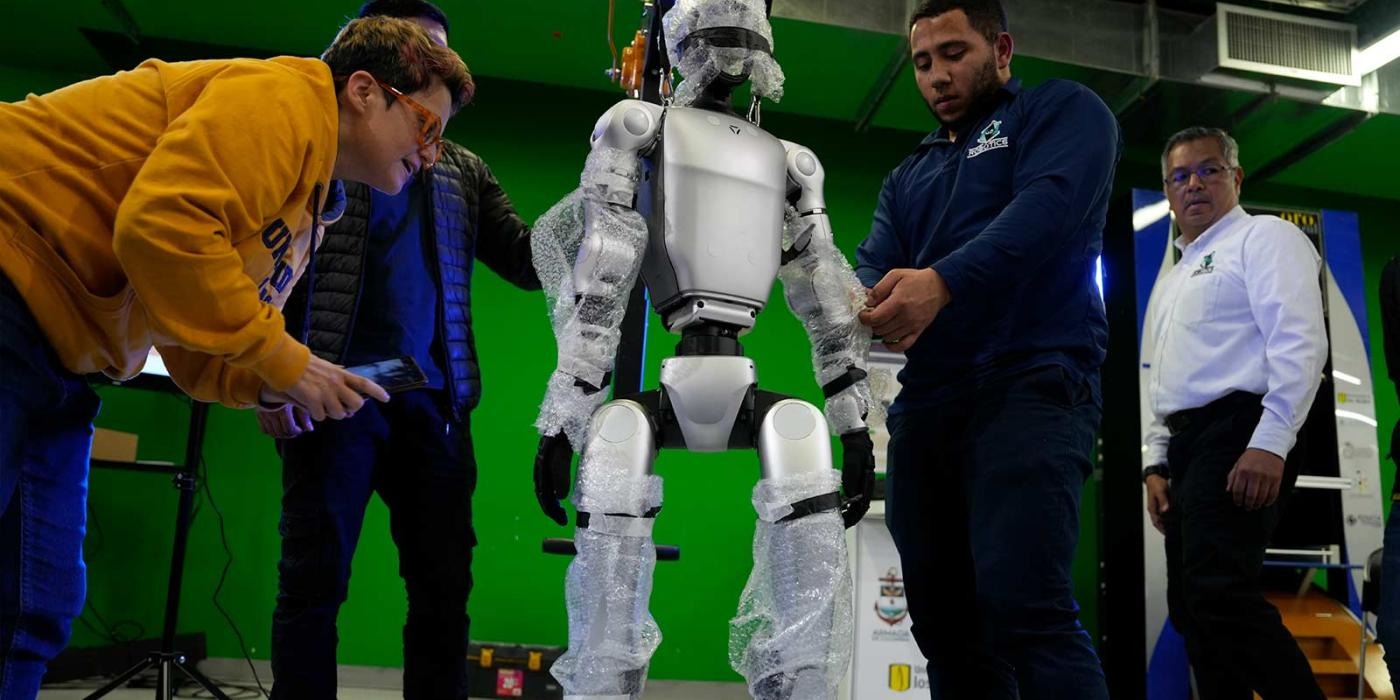Aura, the new humanoid from the University of the Andes, arrives to transform research and training.

The University of the Andes officially welcomed Aura, the first humanoid incorporated by a university in Latin America.
This is an academic version of the Unitree G1 - EDU robot, developed by the Chinese company Unitree Robotics . Aura not only represents a technological breakthrough, but also an opportunity to rethink the role of artificial intelligence in education, research, and everyday life.
The humanoid's name was selected through a competition held by the Faculty of Engineering, in which students, professors, and administrative staff participated. "Aura" was the winning entry, chosen for its evocation of the human, the intangible, and the intelligent—qualities that this new member of the academic ecosystem promises to explore.

Aura, the robot from the University of Los Andes Photo: University of Los Andes
Standing 1.32 meters tall, weighing 35 kg, and with a top speed of 7 km/h, Aura is able to walk, run, sit, and stand up with surprising agility.
Its design includes a fast-charging battery, an octa-core processor, and next-generation connectivity. It's also equipped with advanced sensors such as a 3D LiDAR, an Intel RealSense depth camera, and an audio system with noise-cancelling microphones.
Beyond its technical specifications, Aura was designed as a learning platform. Its architecture allows for the programming of new functions, the integration of custom sensors, and autonomous interaction with the environment. It is, in essence, an open tool for experimentation.

Aura, the robot from the University of Los Andes Photo: University of Los Andes
Rubby Casallas, dean of the Faculty of Engineering, explained that Aura is poised to become a focal point for academic initiatives in multiple fields of knowledge. "Its presence at the University is a unique opportunity to foster interdisciplinary research and reflect on the role robots will play in our daily lives," she stated.
Students like Juan Felipe Ruiz and Nicolás Correal, from the Electronic Engineering program, are already planning how to integrate Aura into their work. Both have participated in international robotics competitions and will now focus their efforts on software development, artificial intelligence, and perception and interaction systems.
For Carlos Francisco Rodríguez, the Faculty's academic vice dean, the arrival of Aura poses not only technical challenges but also ethical ones. "The advancement of humanoids can transform sectors such as healthcare, agriculture, and industry, but it also forces us to consider new standards, legal frameworks, and liability criteria," he said.
The University aims for Aura to go beyond being a technological study object, but rather to serve as a platform for questioning, debating, and building a critical vision of the future of automation and its social impact.
Aura integrates between 23 and 43 degrees of freedom depending on its configuration, can manipulate objects precisely, learn tasks by imitation, and use advanced artificial intelligence thanks to the UnifoLM platform, developed by its manufacturer. It is available in different versions, from basic models to configurations with dexterous hands equipped with touch sensors.
More news:eltiempo





